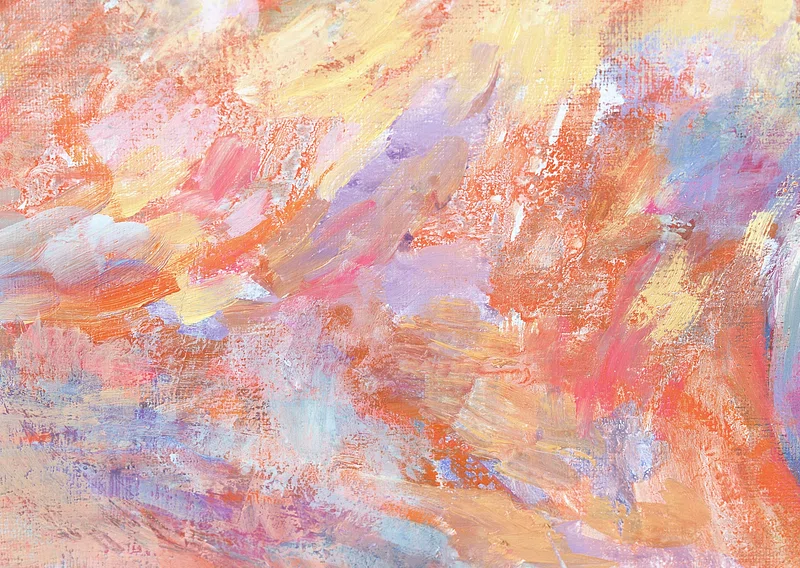How to Create a Timeline for Regularly Updating Your Art Portfolio

Updating your art portfolio regularly sounds like something only superhumans do… or people who somehow enjoy spreadsheets. But for the rest of us (who maybe have 37 unfinished paintings, two open calls bookmarked, and no idea what year our artist bio was last updated), it can feel like a lot.
So, what if we made it… not stressful? What if your portfolio timeline felt more like a cozy studio ritual than a looming admin task?
This guide isn’t about turning you into a marketing robot. It’s about crafting a flexible rhythm that actually fits your creative life, the ebb, the flow, the chaos, and the quiet.
Whether you’re a slow-cooker or a firework artist, this is your permission slip to build a timeline that works with you, not against you.
We’re ditching rigid calendars and creating something that honors your energy, your art, and your voice. Because your portfolio isn’t just a digital shelf, it’s the living, breathing story of your practice.
Why Regular Portfolio Updates Matter
Before we dive into timelines, let’s name why this matters:
- It reflects your growth – Your art evolves. So should your portfolio.
- It improves your visibility – Updated portfolios perform better on search engines, social media, and open call reviews.
- It builds confidence – Regular reflection helps you track wins, clarify your voice, and document your process.
- It saves time – When opportunities arise, you’re ready. No last-minute scrambles.
The real secret? Regular doesn’t mean constant. It means rhythmic. Let’s build yours.
Step 1: Align Updates With Your Creative Cycles
Not every month is for promotion. Some months are for making, others for refining or resting. Your portfolio timeline should match your internal creative seasons.
Start by identifying your natural rhythm. Ask:
- When do I usually complete new work?
- What times of year do I feel most energized to share?
- Are there seasons where I retreat inward or take breaks?
Not sure what your creative seasons look like? Here’s a cozy calendar-style breakdown to get you started:
| Season | Focus | Tasks |
| Spring | Sharing & Submitting | – Update website gallery- Apply to 1–2 open calls- Refresh artist statement |
| Summer | Creation & Documentation | – Focus on studio time- Photograph finished works- Journal process notes |
| Fall | Refresh & Outreach | – Add new works online- Pitch to galleries- Send email newsletter |
| Winter | Archive & Reflect | – Archive outdated work- Write reflection blog post- Plan next cycle |
Then, build around those seasons:
Creative Season (Winter or Summer) – Document your work-in-progress, sketch, and journal notes. Light updates only.
Sharing Season (Spring or Fall) – Update your website, publish your latest work, write artist statements, pitch to calls.
Rest/Archive Season – Reflect, tidy up, and revisit your past pieces to see what’s still aligned.
This way, your portfolio updates are a reflection of your life, not a disruption to it.
Step 2: Map Milestones, Not Rigid Deadlines
Rather than overwhelming yourself with a to-do list, create milestone markers. These are gentle signposts that help you stay on track.
Here’s a sample quarterly breakdown:
Monthly Milestones (Optional, for high-output artists):
- Add 1–2 new works
- Write or revise one project description
- Share 1 update on social or newsletter
Seasonal Milestones (Best for most artists):
Seasonal Check-In
- Reflect on recent work
- Select 3–5 pieces to highlight
- Update homepage or featured gallery
Seasonal Update
- Revise artist statement or add a new paragraph
- Share a story behind a work
- Archive old pieces or move to “past works”
Seasonal Outreach
- Submit to 1 open call or residency
- Email a gallery or curator with portfolio link
- Post a project recap to blog/newsletter
Step 3: Make Updating Part of Your Creative Process
Portfolio building shouldn’t feel like homework. Make it a ritual:
- Photograph your work as you finish it. Keep a folder of high-res images and process shots.
- Keep a ‘portfolio notes’ doc. Jot down thoughts, titles, themes, or medium details.
- Use voice notes or journal reflections to revisit when writing about a piece.
- Create update days at the end of each creative project, like a mini release party.

This makes portfolio upkeep feel like part of your practice, not a chore separate from it.
Step 4: Choose Your Platforms and Update Intentionally
You don’t need to update everywhere every time. Instead, build a platform pyramid:
Core Portfolio (1–2 times per year)
- Website or PDF portfolio
- Bio, artist statement, work samples
- Clean, cohesive layout
Secondary Portfolio Spaces (2–4 times per year)
- Instagram grid or highlights
- LinkedIn/Behance/art collectives
- Artwork archive folders (Google Drive, Dropbox)
Public Presence (Monthly or when inspired)
- Blog or email list
- Studio updates, process videos, interviews
Know what each platform is for so you don’t exhaust yourself trying to update them all. Focus your energy where it matters.
Step 5: Create a Flexible Portfolio Timeline Template
Here’s a sample 6-month timeline you can adapt:
Month 1: Reflection
- Review past 6 months of work
- Make a long list of possible pieces to include
- Note gaps in your portfolio
Month 2: Documentation
- Photograph, scan, and label your best work
- Record process notes or make audio reflections
- Draft or update project descriptions
Month 3: Website Refresh
- Choose 5–10 key works to highlight
- Update gallery, homepage, and statements
- Test all links and formats
Month 4: Sharing + Feedback
- Post a new portfolio section teaser
- Email peers for honest feedback
- Share 1–2 process blog posts or video walkthroughs
Month 5: Expand
- Submit updated portfolio to an open call
- Reach out to a curator or publication
- Add a new project or experiment to your site
Month 6: Rest + Archive
- Remove outdated work or move to “past works”
- Write a short reflection on growth
- Celebrate. You’ve done the work.

Want something a little tighter and more manageable? Try this playful timeline that fits into a busy life but still keeps your portfolio humming:
| Week | Action | Notes/Goal |
| 1 | Reflect on past 3 months of work | Jot down highlights, breakthroughs, what feels aligned |
| 2 | Select 3–5 pieces to feature | Choose works that represent your current direction |
| 3 | Photograph or scan artworks | Make sure images are high-res and consistent lighting |
| 4 | Write short blurbs or stories for each work | Include titles, mediums, dimensions, and one emotional note |
| 5 | Update website gallery | Replace outdated works, add process notes if needed |
| 6 | Revise bio or artist statement | Add new shows, shift tone if style changed |
| 7 | Post teaser on Instagram & send newsletter | Include progress photos or anecdotes |
| 8 | Submit portfolio to a residency or open call | Choose one that aligns with current body of work |
| 9 | Archive older works or move to a separate category | “Past Work” or “Earlier Experiments” sections |
| 10 | Rest + celebrate your updates | Small ritual: journal, share with a friend, take a break |
Repeat this seasonally, adapt as needed.
Step 6: Make It Personal, Not Perfect
Your portfolio is a living document, not a museum.
Every update doesn’t need to be flawless. It needs to be you. Show your process. Include progress shots. Write about the detours.
Ask:
- Does this feel true to where I am now?
- What would I want a viewer to feel?
- What am I ready to release?
The more honest your portfolio feels, the more it resonates.
Bonus: Creative Prompts to Keep It Fun
Use These When You Feel Stuck:
- “If this season of my work had a soundtrack, what would it be?”
- “What three words describe the evolution of my style right now?”
- “What do I wish people knew about this piece?”
- “What’s one small risk I can take with this next update?”
Make updating your art portfolio playful, introspective, and alive.
Final Thoughts: This Is Your Timeline
You don’t need to follow trends, formulas, or polished templates.
You get to build an art portfolio timeline that fits your energy, your output, your life.
Update it in seasons. In bursts. In quiet mornings or midnight sprints. Let it breathe and grow with you.
Because your portfolio isn’t just a container for your work. It is your work.
And when you care for it regularly, not perfectly, you turn it into a beacon.
A signal to the world: “Here I am. This is what I’m making. This is what I’m becoming.”
Extended Resources: Keep Momentum Going
Tools to Organize Your Timeline
- Google Calendar or Notion for seasonal planning
- Trello boards for visual task management
- Airtable to track submissions and updates
Ideas for Portfolio Expansion
- Behind-the-scenes stories or videos
- An interactive “process map” of a favorite project
- A timeline view of your evolution as an artist
What to Document (Even If You Don’t Share Yet)
- Your sketches and drafts
- Color palette swatches or texture tests
- Voice memos of your thought process
- Mistakes and redirections that taught you something
Remember
Your art doesn’t need to hustle. It needs space. Your timeline doesn’t need to mimic anyone else’s.
You get to create something deeply sustainable, where art and life walk together.
When you do that, your portfolio won’t just be updated, it’ll be alive.
And when people see it, they won’t just think, “Oh, nice work.” They’ll feel like they’ve met the artist.
That’s the real magic.
